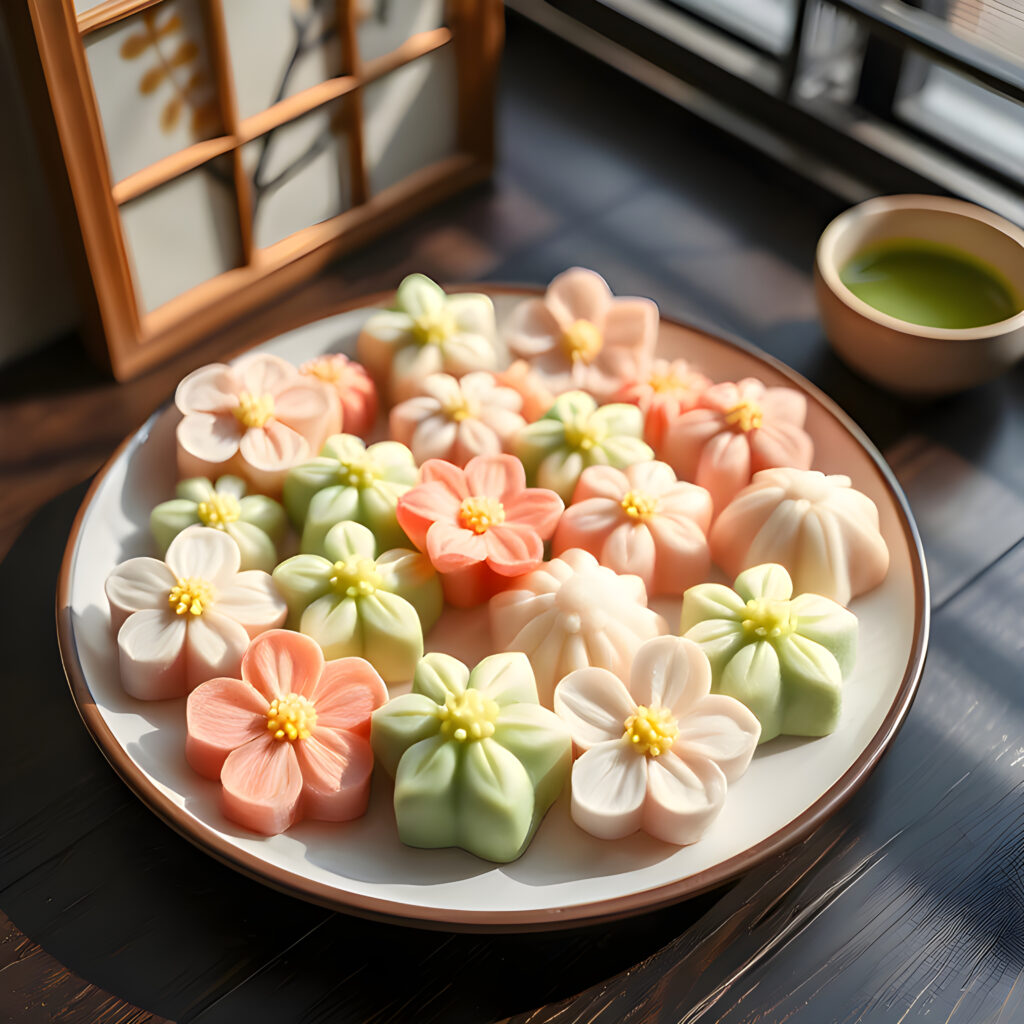Nerikiri Wagashi is a delicate, hand-crafted Japanese confection made from sweet white bean paste and glutinous rice flour. Often shaped into seasonal motifs like flowers or leaves, it’s known for its smooth texture, subtle sweetness, and artistic presentation. Traditionally served with matcha during tea ceremonies, Nerikiri is as much a feast for the eyes as it is for the palate.
Ingredients
A. Shiro-an (White Bean Paste Base)
-
200g white bean paste (shiro-an, unsweetened or lightly sweetened)
-
40g sugar (adjust depending on sweetness of the bean paste)
B. Nerikiri Dough
-
100g shiro-an (from above)
-
50g sweetened white bean paste (for structure)
-
20g glutinous rice flour (e.g., shiratamako or mochiko)
-
30ml water
Optional for decoration/coloring:
-
Natural food coloring (matcha, beet powder, butterfly pea, saffron)
-
Small brushes or toothpicks for shaping/detailing
Execution
Prepare Shiro-an (if not using pre-made)
-
Soak peeled white beans overnight.
-
Simmer until soft, drain, and mash until smooth.
-
Push through a fine sieve to remove skins/fibers.
-
Cook over low heat with sugar until it becomes a thick paste.
-
Let cool. (Can refrigerate or freeze for future use.)
Make Nerikiri Dough
-
Mix glutinous rice flour and water in a nonstick pan until smooth.
-
Cook over low heat, stirring constantly until it becomes a sticky dough (mochi texture).
-
Remove from heat and knead into the shiro-an paste (100g) while warm. Mix well.
-
Let the nerikiri dough cool. Wrap and rest for at least 15 minutes.
Divide, Color & Shape
-
Divide dough into 8 equal portions.
-
If using colors, divide and knead coloring into each portion.
-
Shape by hand or use small molds (traditional wagashi molds or cookie cutters).
-
For more detailed designs (flowers, leaves, seasonal motifs), use toothpicks, small knives, or brushes.
Additional Tips
✔ Smooth texture is key. Sieve the bean paste thoroughly and knead dough well to avoid cracks.
✔ Keep dough covered with plastic wrap or a damp towel while working—dries out quickly.
✔ Use natural colorants for more traditional aesthetics (e.g., matcha for green, beet for pink, turmeric for yellow).
✔ Practice seasonal designs: cherry blossom (spring), maple leaf (autumn), chrysanthemum (autumn), camellia (winter).
✔ Chill before serving – it firms up the texture and makes details pop.
Q&A About Nerikiri Wagashi
Q1: Can I use store-bought shiro-an (white bean paste)?
A: Yes! Store-bought shiro-an saves time and works well. Just make sure it’s smooth and not overly sweet.
Q2: What can I use for natural coloring?
A: Matcha (green), beetroot powder (pink), saffron or turmeric (yellow), and purple sweet potato (purple) are great natural options.
Q3: Can I freeze Nerikiri?
A: Do not freeze finished Nerikiri—texture will degrade. Instead, freeze the bean paste before assembly.
Q4: How do I keep the dough from drying out while shaping?
A: Cover unused portions with plastic wrap or a damp cloth at all times to prevent drying and cracking.
Q5: I’m not good at hand-shaping. Any tips?
A: Use small silicone molds or cookie cutters for easier shaping. Toothpicks and brushes help add fine details.
Q6: What’s the best way to serve Nerikiri?
A: Serve at room temperature with matcha tea. Let the sweets sit for a few minutes after chilling to bring out their full flavor and texture.
Why You Should Make This Recipe
1. Beautiful and Artistic:
Nerikiri Wagashi transforms dessert into edible art, perfect for special occasions or impressing guests.
2. Naturally Plant-Based:
Made from beans and rice flour, it’s naturally vegan and gluten-free—great for a variety of diets.
3. Customizable for Any Season:
Shape and color it to match seasonal themes like cherry blossoms in spring or maple leaves in fall.
4. Perfect with Tea:
Its subtle sweetness pairs wonderfully with matcha or green tea, making it ideal for a relaxing moment or tea ceremony.
5. Fun to Make:
A hands-on, calming experience—like edible sculpting—that can be enjoyed solo or as a creative group activity.
Happy Cooking
Diana



